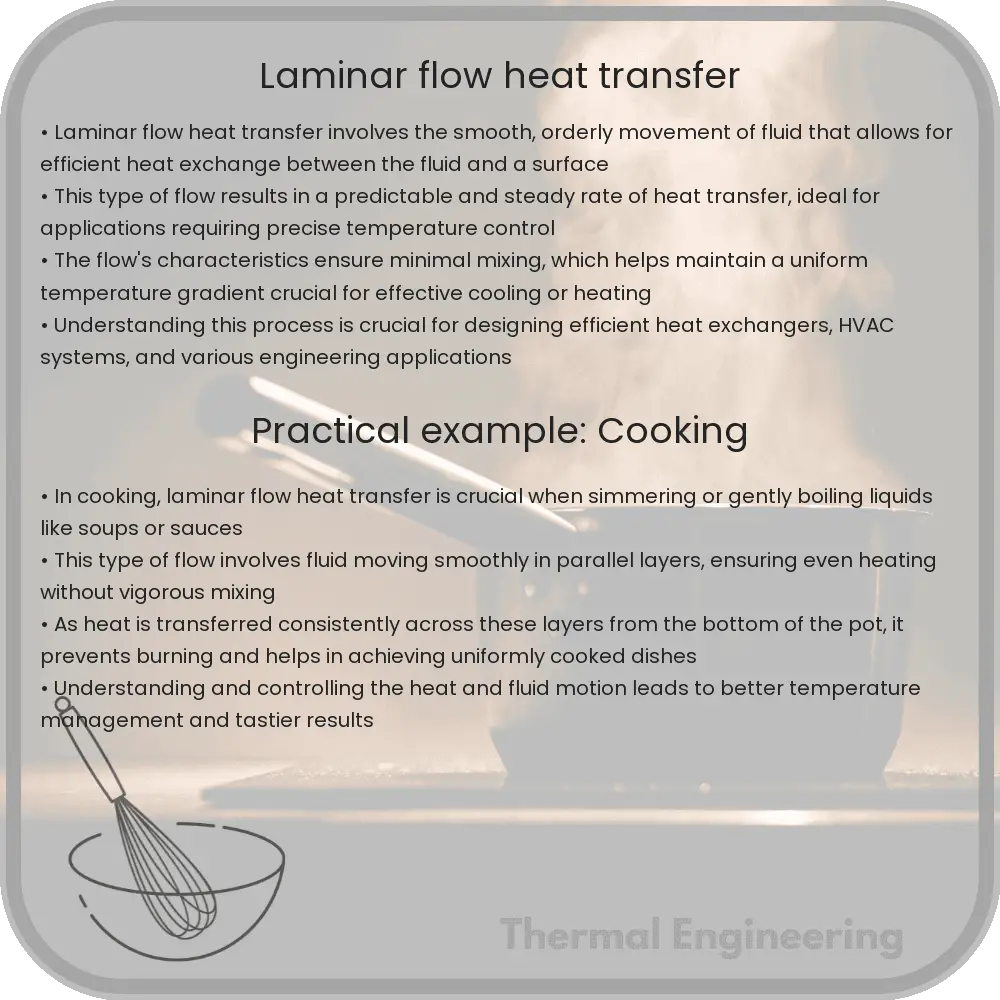Learn about laminar flow heat transfer in engineering, crucial for thermal management in aerospace, automotive, and HVAC sectors.

Understanding Laminar Flow Heat Transfer in Engineering
Laminar flow heat transfer is a critical concept in the field of thermal engineering. It describes the way heat is transferred between a surface and a fluid flowing in layers, without mixing across those layers. This phenomenon is especially important in designing equipment and processes in industries like aerospace, automotive, and HVAC (heating, ventilation, and air conditioning).
What is Laminar Flow?
Laminar flow occurs when a fluid flows in parallel layers, with no disruption between the layers. This type of flow is characterized by smooth streamlines and regular paths, typically occurring at lower velocities and higher viscosities. In terms of heat transfer, laminar flow can greatly influence the rate and efficiency of heat being transferred from one surface to another.
Basic Principles of Heat Transfer in Laminar Flow
Heat transfer in laminar flow is predominantly conducted through the fluid layers. The basic equation for this process is derived from Fourier’s Law of Heat Conduction, which can be expressed as:
Q = -k * A * (dT/dx)
- Q represents the heat transfer rate in watts (W).
- k is the thermal conductivity of the fluid (W/m*K).
- A is the surface area through which heat is being transferred (m2).
- dT/dx is the temperature gradient in the direction of flow (K/m).
This equation shows that heat transfer increases with higher thermal conductivity, larger surface area, and steeper temperature gradient.
Factors Affecting Laminar Flow Heat Transfer
Several factors impact the effectiveness of heat transfer in a laminar flow regime:
- Fluid Viscosity: Higher viscosity impairs the movement of fluid layers, potentially reducing the heat transfer rate.
- Fluid Velocity: While higher velocities can disrupt laminar flow, modifying the flow speed thoughtfully can optimize heat transfer rates without transitioning to turbulent flow.
- Surface Temperature: Variations in surface temperature can affect the temperature gradient driving the heat transfer.
Applications of Laminar Flow Heat Transfer
The principles of laminar flow heat transfer are utilized in many practical applications:
- Microchannel Heat Exchangers: These devices feature small channels through which heat transfer fluids flow, taking advantage of laminar flow for high efficiency.
- Electronic Cooling Systems: Many electronic devices use laminar flow heat transfer principles to manage heat, thus preventing overheating and ensuring performance.
- Aerospace: In high-altitude environments, controlled laminar flow can be crucial for regulating the temperatures of aerospace vehicles.
Challenges and Future Perspective
While laminar flow allows for stable and efficient heat transfer, it has its limitations. One major challenge is its susceptibility to becoming turbulent with increased flow rates or reduced viscosities. This transition can disrupt heat transfer efficiency. Ongoing research in the field aims to enhance our understanding of laminar flow dynamics and to develop new materials and technologies that stabilize laminar flow and optimize heat transfer rates.
In conclusion, laminar flow heat transfer is a foundational aspect of thermal engineering that impacts a wide range of industries. Understanding and manipulating this phenomenon is crucial for developing efficient, effective, and innovative thermal management systems.